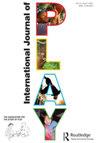(对象)游戏行为的潜在可能性
IF 1.2
Q3 EDUCATION & EDUCATIONAL RESEARCH
引用次数: 5
摘要
关于游戏的进化,有许多适应主义的假说和非选择主义的解释。一些学者认为,“初级过程游戏”最初是偶然条件的副产品,无论是否适应(例如高代谢能量,无聊)。一旦进化,这些基本的游戏行为元素,以一些古怪、随意性、冗余性、灵活性和潜在的潜力为特征,可能会成为创造性和适应性变化的内置储存库。因此,在进一步进化转化为更复杂的二级过程和三级过程的过程中,它们可能随后被选择为有益或增强健康的行为效应(即期望类型2)。我们建立了一个理论案例,将(物体)游戏作为一种可共同接受的行为扩展,具有2型预期的潜力,并提出了一项研究设计,以实证检验石器游戏传统是否可以被推断为非人灵长类动物的石器工具使用。我们的方法与古尔德关于进化论的多元观点是一致的。本文章由计算机程序翻译,如有差异,请以英文原文为准。
The exaptive potential of (object) play behavior
ABSTRACT There are many adaptationist hypotheses and non-selectionist accounts for the evolution of play. Some scholars argued that, ‘primary-process play’ originally arose as a by-product of fortuitous conditions, adaptive or not (e.g. high metabolic energy, boredom). Once evolved, these basic playful behavioral elements, characterized by some quirkiness, arbitrariness, redundancy, flexibility, and latent potential, may serve as a built-in reservoir of creative and adaptive variability. As such, they could subsequently be co-opted for beneficial or fitness-enhancing behavioral effects (i.e. exaptations Type 2) during further evolutionary transformation into more elaborate secondary-process and tertiary-process play. We built a theoretical case for (object) play as a co-optable behavioral spandrel, with a potential for exaptations Type 2, and proposed a research design to empirical test whether stone play traditions can be exapted into stone tool use in non-human primates. Our approach is consistent with Gould’s pluralistic perspective on evolutionary theory.
求助全文
通过发布文献求助,成功后即可免费获取论文全文。
去求助
来源期刊

International Journal of Play
Social Sciences-Cultural Studies
CiteScore
1.90
自引率
20.00%
发文量
60
期刊介绍:
The International Journal of Play is an inter-disciplinary publication focusing on all facets of play. It aims to provide an international forum for mono- and multi-disciplinary papers and scholarly debate on all aspects of play theory, policy and practice from across the globe and across the lifespan, and in all kinds of cultural settings, institutions and communities. The journal will be of interest to anthropologists, educationalists, folklorists, historians, linguists, philosophers, playworkers, psychologists, sociologists, therapists and zoologists.
 求助内容:
求助内容: 应助结果提醒方式:
应助结果提醒方式:


